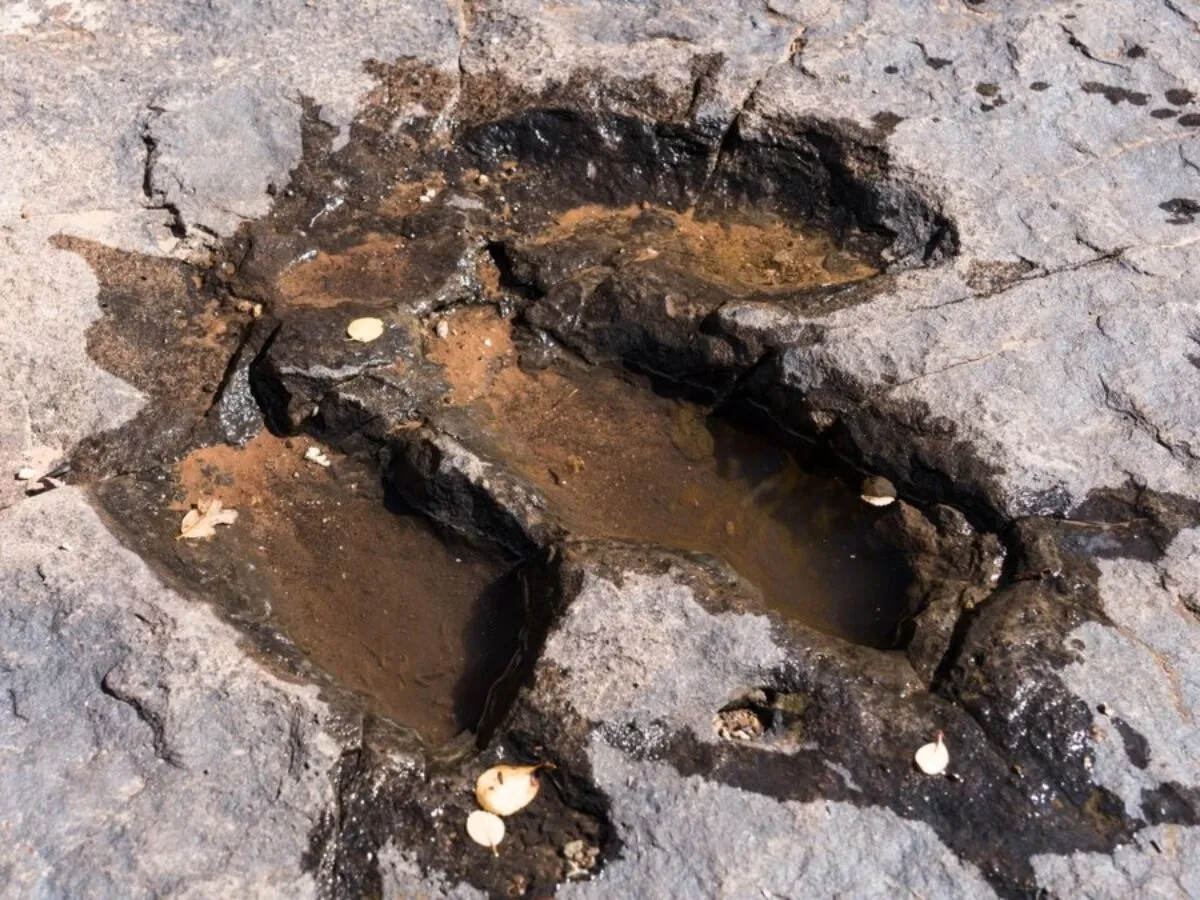Brazil’s geological service unveiled a new dinosaur species, shedding light on a speedy carnivorous creature that once roamed the desert landscapes of the early Cretaceous period.

Brazil’s geological service unveiled a new dinosaur species on Thursday, shedding light on a speedy carnivorous creature that once roamed the desert landscapes of the early Cretaceous period. Named Farlowichnus rapidus, this pint-sized predator stood at a height comparable to a modern-day seriema bird, measuring approximately 60-90 cm (2-3 feet) tall, as detailed by researchers in the recently published findings in the scientific journal Cretaceous Research.
The geological service emphasized the agility of Farlowichnus rapidus, noting, “From the large distance between the footprints found, it is possible to deduce that it was a very fast reptile that ran across the ancient dunes.” The early Cretaceous period, spanning from 100 to 145 million years ago, set the stage for this remarkable creature’s existence.
The fossilized “trackways” of this newfound species were initially discovered in the 1980s by Italian priest and paleontologist Giuseppe Leonardi in what is now the city of Araraquara, located in Sao Paulo state. Reverend Leonardi generously donated one of the footprint samples, sourced from the Botucatu formation—a collection of rocks formed in an ancient dune desert—to Brazil’s Museum of Earth Sciences (MCTer) in 1984.
What sets these footprints apart is their distinctiveness from all other known dinosaur tracks, according to MCTer paleontologist Rafael Costa. The Botucatu formation, where these tracks were unearthed, provides a unique glimpse into the prehistoric past, offering valuable insights into the behaviors and characteristics of Farlowichnus rapidus.
This discovery adds another layer to our understanding of the diverse dinosaur fauna that once inhabited the Earth, particularly in regions that have evolved over millions of years. Farlowichnus rapidus, with its fleet-footed nature, brings a new dimension to the narrative of the ancient Cretaceous period, showcasing the adaptability and uniqueness of life during that era.
As researchers continue to explore and analyze the fossilized remains, the unveiling of Farlowichnus rapidus marks a significant milestone in paleontological studies, emphasizing the importance of continued research to unlock the mysteries of our planet’s rich prehistoric history.